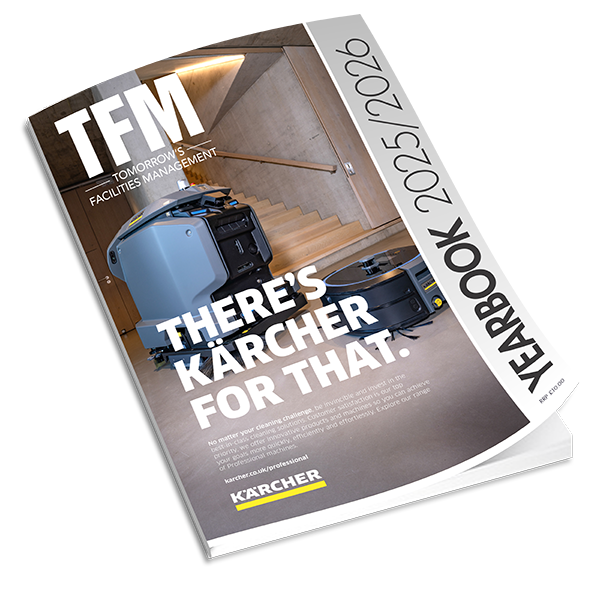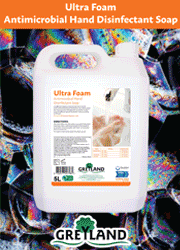Employers and employees alike should avoid poor quality workwear and invest in good quality, sustainable working clothes to help protect the environment, says Peter Dumigan, MD of the Hultafors Group UK, which owns Snickers Workwear, Solid Gear safety footwear as well as Hellberg Safety PPE.
While many of us might think that donating our used clothing to charity shops or putting them in collection banks is doing somebody a favour, it’s not always a particularly charitable deed given that many clothes are so cheaply made that they cannot be reused or properly recycled.
The BBC reported that one of the dumping grounds for our unwanted clothing is the rapidly growing fast fashion graveyard in Chile’s Atacama Desert. Traders in Chile import unwanted clothes of all types mainly from Europe and the US, to resell both locally and to other Latin American nations. But more than half of the 60,000 tonnes of clothes imported into Chile each year ends up in illegal desert landfills, with dire consequences for the environment and the local communities.
Sadly, it’s typical of an all too familiar story in our throw-away culture - how the demand for fast fashion is contributing to long-term waste and seriously impacting the environment. As the Daily Mirror has more recently reported, Britain’s love of fast fashion is fuelling an environmental catastrophe in Ghana’s capital which has a toxic mountain of ditched clothing rotting on a beach. The Mirror identified that unsold used clothing in the UK is sold to textile merchants, going on to say that while some of the lowest quality items may be recycled for mattress stuffing, underlay or cleaning rags, large numbers of garments pass through international networks and are dumped as waste.
While it’s a relatively new buzzword to some, fast fashion is certainly at the heart of the sustainability debate in the clothing industry. As far as protective wear is concerned and, especially given its short lifecycle, poorer quality and throwaway working clothes are effectively becoming a new kind of Fast Workwear.
Fast fashion is cheap clothing produced to satisfy a short-term mass-market demand. That’s precisely what fast workwear – cheap, poorer quality protective wear - does. It fulfils a demand for low-cost workwear satisfying a conscious buying decision and a desire for cheaper products. Consumers believe they are investing in a cost-effective solution and saving themselves money. But cheap protective wear comes with a hidden cost – because of its short life cycle it’s not sustainable and our environment is starting to pay the price.
So just how big is the throw-away clothing problem in the UK? It’s said that each Briton owns an average of 115 garments and that the UK is the fourth largest textile-waster in Europe. In 2018, £12.5bn worth of the UK’s clothes went to landfill. Sadly, most consumers are blissfully unaware that the clothing industry is resource intensive. Globally, the fast fashion industry uses 1.5tn tonnes of water each year and, given the volume of chemicals used in the manufacturing processes, it is the second biggest polluter of water supplies and also responsible for 10% of global carbon dioxide emissions. What’s more, these figures are not about to start decreasing given that the demand for raw materials in the industry is expected to triple by 2050.
Pioneering sustainable practices
The leading protective wear brands are beginning to think carefully about sustainability by considering the processes and resources required to make clothing. They are also advocating buying better-quality garments that will last longer, as well as incorporating recycled fibres into their fabric and garment materials technology thereby reducing our carbon footprint.
For the likes of the Hultafors Group, and in particular its protective wear brand Snickers Workwear, the transition to adopting sustainable business practices and product development is a priority. Sadly, the linear business principle followed by some cheaper workwear brands is a 'take, make, dispose' practice for producing cheap clothing. Once those garments have reached the end of their useful life, wearers dispose of them – without any real consideration for environmental impact.
Snickers Workwear’s philosophy is to 'Reduce, Reuse, Recycle'. This approach involves reducing the resources used during a garment’s production; turning waste into workwear by incorporating recycled fibres into its garment materials technology; and developing harder-wearing workwear using sustainable fabrics to keep the garments in effective use for as long as possible.
Snickers Workwear’s vision is to be at the forefront of sustainable workwear by using smarter solutions and technologies that include sourcing the highest quality, most hard-wearing products in its clothing ranges with as little environmental impact as possible. Some of the steps the brand is taking to improve its environmental performance include:
- Prioritising the use of materials of the highest quality to make garments last longer, replacing conventional materials with more sustainable alternatives.
- Prioritising Preferred Fibres - such as REPREVE and SORONA those that have more sustainable properties in comparison to conventional options.
- Recycling man-made materials such as nylon and polyester fabrics to create new, Preferred Fibres.
- Ensuring that Preferred Fibres deliver high levels of durability and comfort to ensure a long product lifetime- the key to reducing waste.
- Using materials that can easily be recycled to create new raw material with the same performance level as the original virgin material.
- Driving demand for Better Cotton, an initiative which positively impacts farmers and the environment.
- Committing to conscious cotton choices - in 2022 an impressive 65% (846 metric tonnes), of Snickers Workwear’s total cotton uptake was sourced as Better Cotton.
- Using more sustainable colouring processes that significantly reduces water, chemicals and energy use – commonly referred to as dope dye.
- Using 'Mulesing-Free' Merino Wool to prevent animal cruelty
How can you make a difference?
As workwear manufacturers navigate the complex and challenging transition to more sustainable business models, you can support them by asking how sustainable the garments that you’re buying actually are? Also, by choosing those brands that are committed to improving sustainability. Things you can do include:
- Avoid fast workwear and cheap protective wear products.
- Invest in better quality workwear - select products that are built to last that can be kept in use as long as possible.
- Identify workwear brands who are extending the lifespan of their workwear.
Finally…
Increasing levels of awareness about the impact of waste on our environment will surely have an impact on the clothes people choose for working on site in years to come.
For Snickers Workwear, sustainable product development and the initiative for turning Waste into Workwear is being applied to every new product in the Snickers Workwear collection. It brings additional assurance that the Snickers Workwear Hallmarks of design, comfort, functionality, durability and now sustainability will not be compromised in any way.
Snickers Workwear’s objective is to ensure that by 2030, 70% of the fabrics it uses are Preferred Fibres – those with sustainable properties and a lower environmental footprint. The target for 2023 - that the company will be at 40% has already been reached - a significant achievement by any measure. It’s a process that will deliver full manufacturing transparency and garment lifecycle traceability, thus reducing our climate impact and preventing Fast Workwear from going into landfill.
Sustainable garment manufacturing aligned with well-informed buying decisions will play a significant part in helping us to achieve our climate goals and securing the health of the planet for future generations. But we must make conscious decisions to be successful in accelerating positive change.
As the Voice of the Daily Mirror recently said: “We are what we wear to some extent and paying a little more - even in a cost of living crisis - for clothes we’ll keep longer and wear more often would be a cultural change that would benefit the earth.”



































